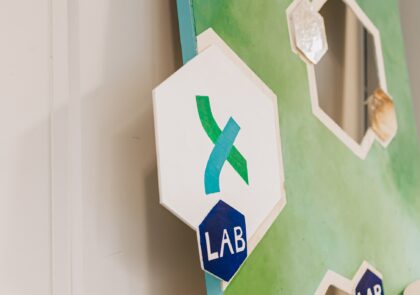
Päijät-Häme is striving to strengthen evidence-based innovation policies, but several challenges persist. Weak collaboration between academia, businesses, and policymakers, fragmented innovation management and data, difficulties measuring knowledge transfer, and a lack of analytics expertise hinder progress. Learning from successful models in other countries can help bridge these gaps and enhance regional competitiveness.
Author: Niko Lankinen
Strengthening collaboration between academia, businesses, and policymakers
Although LAB and LUT universities have strong industry ties, their research findings do not always translate into concrete business applications or inform policy decisions (LAB 2024). This is partly due to fragmented innovation management, where the key innovation value chain (IVC) actors—such as universities, policymakers, welfare counties, and businesses—lack an explicit strategic agreement on seamless collaboration within the IVC and, in some cases, fragmented organizational structures. Clearly defined roles within the IVC and well-integrated innovation management are essential to ensuring that research findings are effectively tested and implemented in real-world conditions. (Valtiontalouden tarkastusvirasto 2020.)
At the organizational level, e.g., LAB’s research groups and business support units, such as LAB WellTech, also operate as separate profit centers. This separation may lead to a lack of internal integration, hindering the transfer of knowledge and expertise between units, which weakens business growth support and slows down the commercialization of innovations. According to a report by the National Audit Office of Finland (2020), separating research and business support functions can prevent companies’ effective utilization of research findings, limiting their growth potential. (Valtiontalouden tarkastusvirasto 2020.)
Networking support programs can play a crucial role in fostering stronger partnerships. In Belgium Wallonia, the Smart Specialization Strategy (S3) has successfully created sector-based innovation clusters, such as BioWin for biotech and GreenWin for cleantech, which bring together businesses, researchers, and policymakers to collaborate on long-term innovation projects (Wallonia S3 2021). Päijät-Häme could implement a similar cluster-driven approach to encourage deeper cooperation and knowledge exchange.
Addressing data fragmentation and limited infrastructure
A significant challenge in Päijät-Häme is fragmented innovation data (LAB 2024). Research, business development needs, and policy outcomes are often documented in separate systems, making it difficult to track regional innovation trends comprehensively. For example, an environmental technology company based in Lahti might face challenges in recycling bio-based materials but is unaware that LUT University is researching precisely this topic. This disconnect leads to missed opportunities, where companies might struggle with technical challenges that local research institutions could solve—if only the right connections were made.
To overcome this, a centralized digital platform like Catalonia’s RIS3MCAT platform could be developed. This platform integrates external and internal R&D data to map innovation trends. This enables policymakers to make informed funding decisions and facilitates knowledge transfer between businesses and universities (RIS3MCAT 2024). Establishing a comparable system in Päijät-Häme would provide real-time insights into innovation activities, ensuring better alignment between policy, research, and business needs.
Improving the measurement of knowledge transfer
One of the most persistent issues in transitioning to evidence-based innovation policies is the lack of standardized indicators for knowledge transfer (LAB 2024). Traditional metrics, such as R&D spending and patent applications, fail to capture the full impact of innovation. For instance, a research collaboration between a university and a local SME might lead to significant efficiency improvements in production. Still, if no patents are filed or new products are launched, the success of this collaboration remains unmeasured.
To address this, policymakers need to develop new evaluation frameworks that track the success of industry-academia partnerships, commercialization rates of research projects, and long-term impact on regional competitiveness. Slovakia’s Knowledge Management Hub has introduced structured assessment models that provide better insights into the effectiveness of academia-business collaboration, offering a potential blueprint for Päijät-Häme (SCIROCCO 2025).
Bridging the analytics and AI expertise gap
Recruiting AI experts into higher education institutions has proven challenging, as universities often struggle to offer competitive benefits compared to larger corporations. This talent gap limits universities’ ability to drive cutting-edge AI research and innovation. However, the lack of AI and analytics expertise is not limited to universities alone—it also affects policymakers and innovation actors in Päijät-Häme, leading to intuitive rather than evidence-based policy decisions.
Without skilled data science and policy analytics professionals, even the most advanced tools remain underutilized, weakening the region’s ability to leverage AI-driven insights for strategic decision-making. The absence of structured AI adoption strategies within public institutions and businesses further exacerbates this challenge.
To bridge this gap, stronger ties with digital innovation ecosystems will ensure that AI expertise is developed and effectively applied in regional innovation management. Networking with international ecosystems like EIT Digital is a crucial success factor in bridging the talent gap within universities, companies, and public healthcare organizations. By fostering collaboration, it enhances RDI activities and mitigates the lack of in-house expertise. Additionally, it offers durability and a cost-effective approach to driving joint, high-quality international RDI initiatives, building joint spin-offs, and ensuring sustainable innovation and growth (EIT Digital 2025).
Estonia’s Research Infrastructures Roadmap provides an example of a long-term strategy to develop regional data and analytics capacity, ensuring policymakers can rely on robust data when making innovation-related decisions (Estonian Research Council 2025). Similar initiatives in Päijät-Häme could significantly strengthen data-driven policy evaluation and implementation.
Lessons learned
Päijät-Häme faces multiple challenges transitioning to evidence-based innovation policies, including weak stakeholder collaboration, fragmented data infrastructure, inadequate measurement tools, and a shortage of analytics expertise. However, by implementing networking support programs, integrated data platforms, improved knowledge transfer indicators, and targeted training in data analytics, the region can enhance its innovation ecosystem. Learning from successful strategies in Catalonia, Wallonia, Slovakia, and Estonia will help Päijät-Häme develop stronger, more data-driven policies that ensure innovation investments yield tangible societal and economic benefits.
References
EIT Digital. 2025. The Largest digital innovation ecosystem in the Europe. Cited 21 Feb 2025. Available at https://www.eitdigital.eu/
Estonian Research Council. 2025. Estonian research infrastructures roadmap. Cited 20 Feb 2025. Available at https://www.etag.ee/en/estonian-research-infrastructures-roadmap/
LAB. 2024. Interreg Europe KnowledgeAnalytics. Peer review report: Insights on regional innovation ecosystems. LAB University of Applied Sciences.
RIS3MCAT. 2024. Strategy for the smart specialization in Catalonia 2030. Cited 21 Feb 2020. Available at https://fonseuropeus.gencat.cat/web/.content/ris3cat/documents/angles/ris3cat-2030-en.pdf
SCIROCCO Knowledge management hub. 2025. Knowledge Transfer. Cited 20 Feb 2025. Available at https://www.sciroccoexchange.com/uploads/Knowledge-Transfer-Slovakia.pdf
Valtiontalouden tarkastusvirasto. 2020. Liiketoiminnan kehittäminen tutkimustiedon hyödyntämistä edistämällä. Cited 21 Feb 2020. Available at https://www.vtv.fi/app/uploads/2020/12/VTV-Selvitys-4-2020-Liiketoiminnan-kehittaminen-tutkimustiedon-hyodyntamista-edistamalla.pdf
Wallonia S3. 2021. Wallonia’s smart specialization strategy. Cited 20 Feb 2025. Available at https://www.s3vanguardinitiative.eu/system/files/2021-05/S3%20Wallonia%20general%20presentation.pdf
Author
Niko Lankinen is a chief specialist, growth strategist, and KnowledgeAnalytics project lead at LAB University of Applied Sciences.
Illustration: https://pixabay.com/fi/illustrations/ohjelmisto-internet-luoti-http-www-557602/ (Pixabay Licence)
Reference to this article
Lankinen, N. 2025. Challenges to move towards evidence-based innovation management and policies in Päijät-Häme. LAB Pro. Cited and the date of citation. Available at https://www.labopen.fi/lab-pro/challenges-to-move-towards-evidence-based-innovation-management-and-policies-in-paijat-hame/






